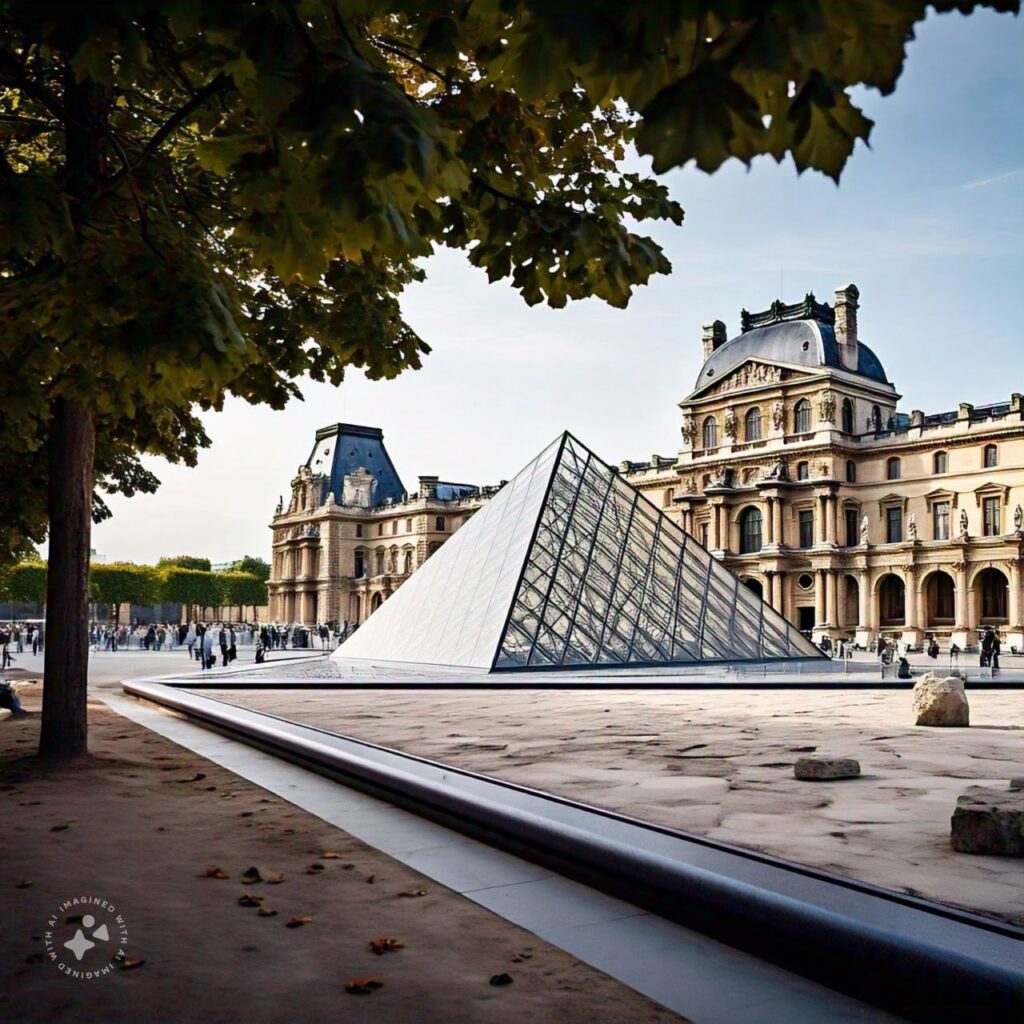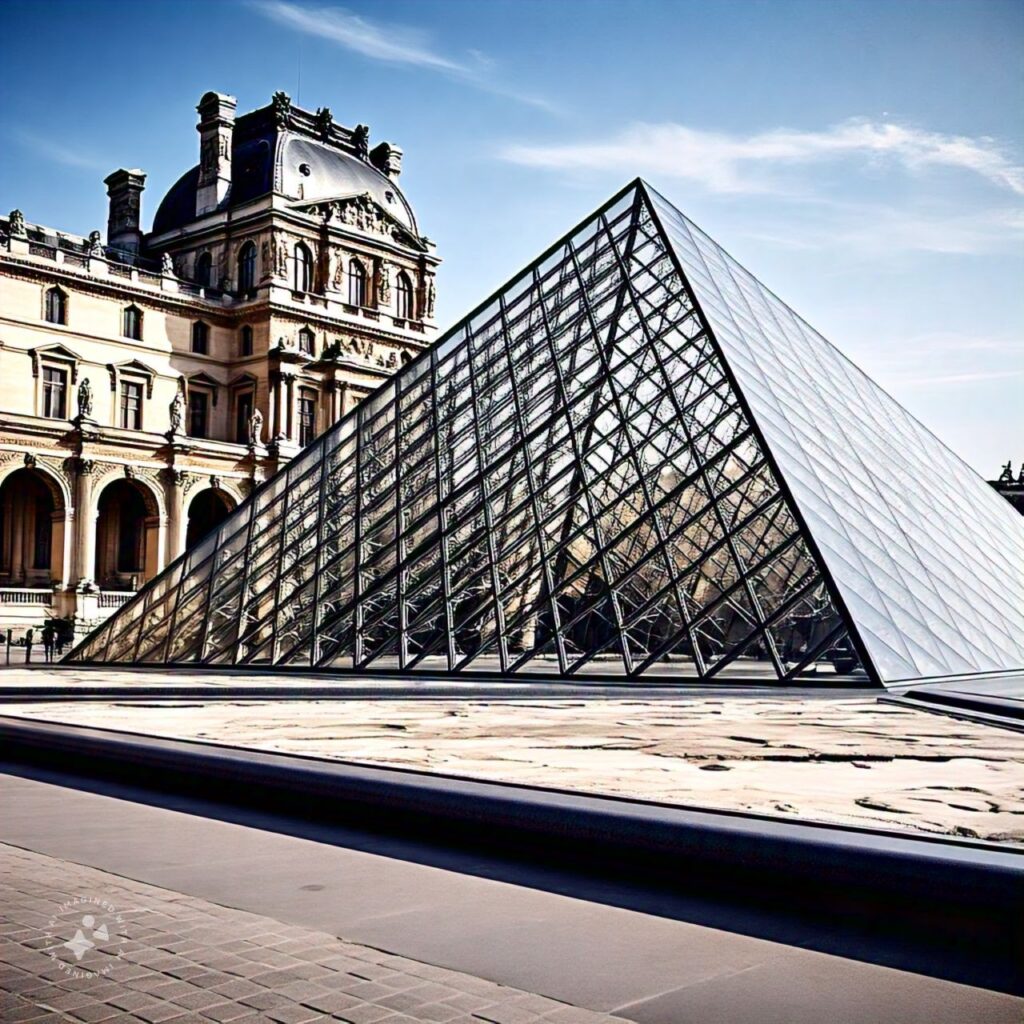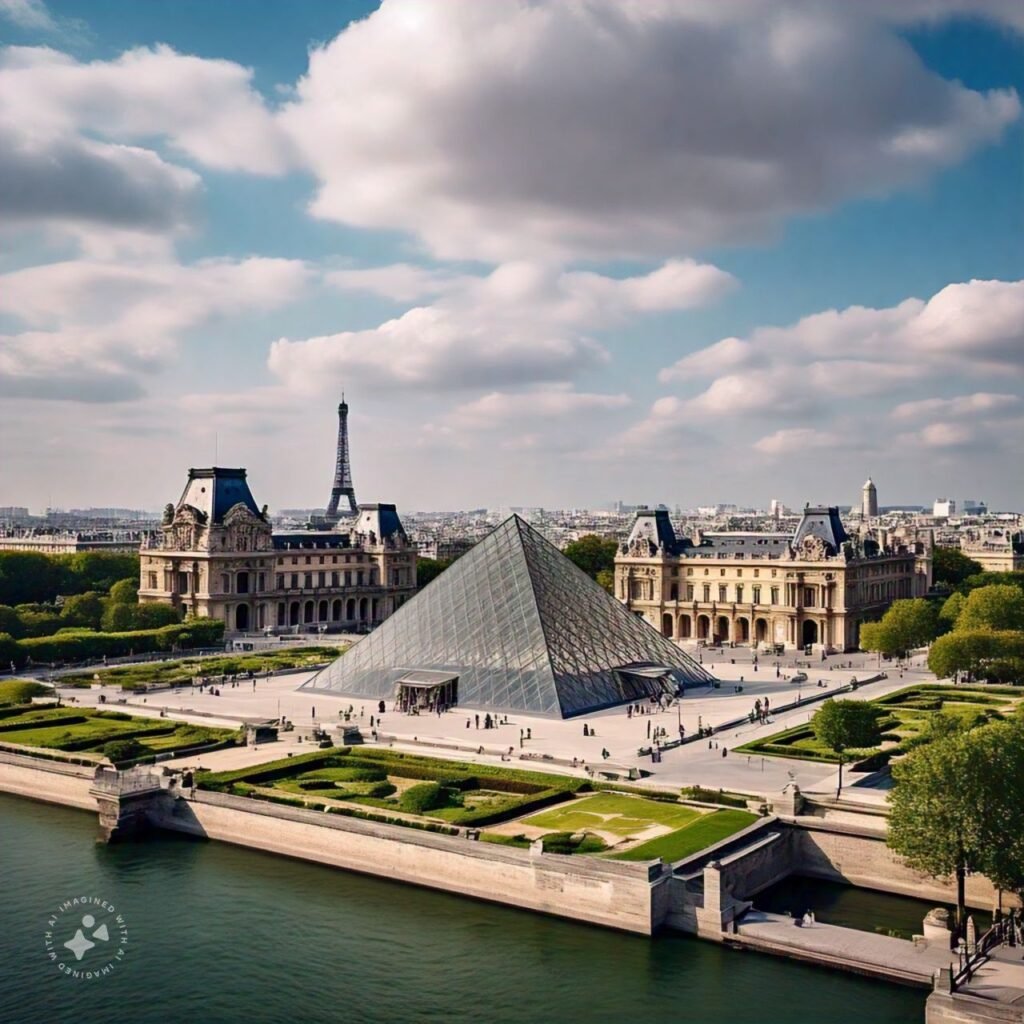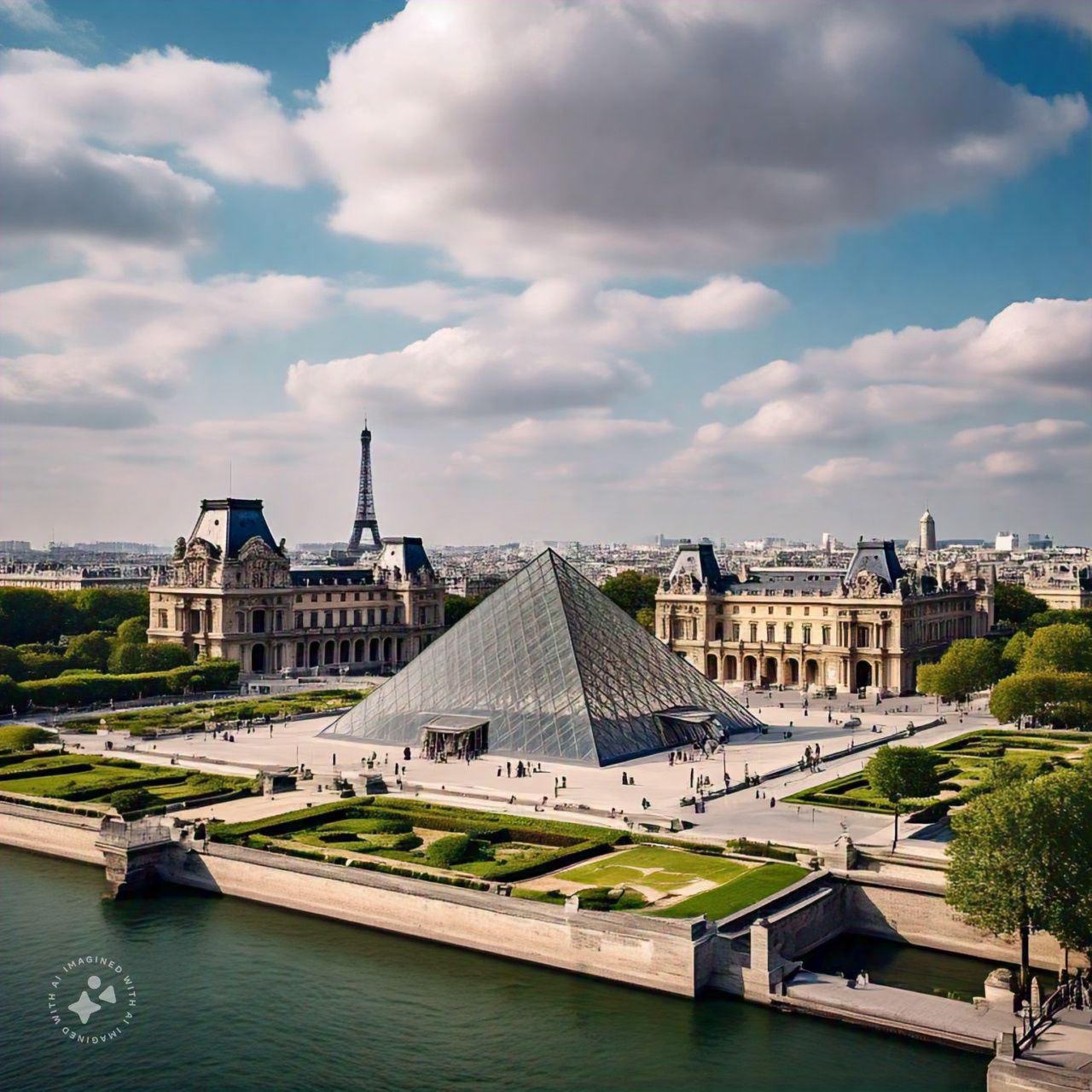Nestled along the banks of the Seine River in the heart of Paris, the Louvre Museum is not only one of the most iconic and visited cultural landmarks in the world but also a treasure trove of art, history, and human creativity. Spanning over 72,000 square meters, the Louvre houses more than 380,000 works of art, making it the largest and one of the oldest museums on the planet. It is home to masterpieces that span thousands of years, from ancient civilizations to modern art, making it a true global center for art, history, and culture.
In this article, we will explore the history, architecture, collections, and enduring significance of the Louvre Museum—a cultural jewel that continues to shape the world’s understanding of art and history.

The History of the Louvre Museum
The story of the Louvre Museum dates back to the late 12th century during the reign of King Philip II Augustus. Originally built as a fortress to protect Paris from potential invasions, the structure underwent several transformations over the centuries. By the late 16th century, under the reign of King Francis I, the Louvre began to be used as a royal palace and began to house a collection of art, laying the foundation for what would eventually become a museum.
The Louvre Museum, in its modern form, was officially established during the French Revolution in 1793, when the monarchy’s art collections were seized and made publicly accessible. Revolutionary leaders wanted to create a national museum that would showcase the nation’s wealth of art, making it a public institution, rather than a private collection for royalty or the elite. Over the years, the museum has expanded dramatically, with the inclusion of Napoleon Bonaparte’s war spoils, gifts, and acquisitions from other empires.
Today, the Louvre continues to serve as a symbol of France’s cultural heritage and commitment to preserving art and history for future generations. It has been at the forefront of many major cultural movements and remains a pivotal institution in the global art world.
The Architecture of the Louvre Museum
One of the most distinctive aspects of the Louvre Museum is its architecture, which blends medieval, Renaissance, and modern design elements. The museum itself is an architectural masterpiece, with layers of history and design reflecting the many different eras it has undergone.
- Medieval Origins: The original structure of the Louvre was a fortress, and remnants of its medieval origins can still be seen in the Louvre’s Cour Carrée (Square Court). This section of the museum is home to the old defensive walls and towers, providing a glimpse into its history as a royal stronghold.
- Renaissance Transformation: The Renaissance period brought significant changes to the Louvre, especially under King Francis I, who commissioned the transformation of the fortress into a luxurious palace. Architects such as Pierre Lescot and Jean Bullant added beautiful Renaissance elements, including grand facades and intricate stone carvings, which can still be seen today.
- The Grand Courtyard and the Glass Pyramid: One of the most famous modern additions to the Louvre is the Glass Pyramid that stands at the museum’s entrance. Designed by Chinese-American architect I. M. Pei, this sleek, glass structure was inaugurated in 1989 and serves as the focal point of the museum’s main entrance. The pyramid’s minimalist design contrasts with the classical and Renaissance features of the surrounding buildings, creating a stunning fusion of old and new. It has become a symbol of the Louvre, blending modernity with history in a striking way.
The Louvre’s architecture is not only beautiful but also practical. The museum has expanded its wings and halls over the years to accommodate its ever-growing collection, and the design continues to serve as a grand stage for the art it houses.

The Louvre’s Collections: A World of Art and History
The Louvre Museum is home to one of the most extensive and diverse collections of art in the world, spanning from ancient civilizations to the 19th century. The museum is divided into eight main departments, each showcasing distinct collections and periods of history.
1. The Egyptian Antiquities
The Louvre has one of the most significant collections of Egyptian artifacts in the world, with over 50,000 objects, including mummies, sarcophagi, and statues of pharaohs. The Egyptian wing highlights the fascinating history of ancient Egypt, with items ranging from everyday tools to monumental sculptures. One of the museum’s most famous pieces is the Seated Scribe, a striking example of ancient Egyptian realism.
2. The Near Eastern Antiquities
The museum’s Near Eastern collection includes art and artifacts from Mesopotamia, Persia, Assyria, and Babylon. Visitors can marvel at impressive sculptures, intricate reliefs, and ancient cuneiform tablets that reveal the sophisticated civilizations of the ancient Near East. The Code of Hammurabi, one of the world’s earliest written laws, is one of the most iconic objects in this collection.
3. The Greek, Etruscan, and Roman Antiquities
This section of the Louvre houses an exceptional collection of classical antiquities, with masterpieces from ancient Greece and Rome. The most famous work in this collection is the Venus de Milo, a stunning statue of the Greek goddess of love and beauty. Other key works include the Winged Victory of Samothrace and the Apollo Belvedere.
4. Islamic Art
The Louvre’s Islamic Art collection is one of the most comprehensive in the world, showcasing the artistic achievements of Muslim cultures across Asia, the Middle East, and North Africa. The collection includes ceramics, calligraphy, textiles, and metalwork, reflecting the richness and diversity of Islamic art. The Bassin de Saint-Germain, a stunning fountain, is a highlight of this section.

5. The Sculptures
The Louvre’s sculpture collection spans from classical antiquity to 19th-century works. The museum houses some of the most famous sculptures in history, including Michelangelo’s Dying Slave, Rodin’s The Gates of Hell, and Antonio Canova’s Psyche Revived by Cupid’s Kiss.
6. The Paintings
The Louvre’s paintings collection is unparalleled, with works by some of the greatest artists in history. From Leonardo da Vinci’s Mona Lisa to Eugène Delacroix’s Liberty Leading the People, the museum’s painting collection offers a journey through the evolution of European art. The Italian Renaissance, French Romanticism, and Dutch Golden Age are just a few of the major artistic periods represented.
7. The Decorative Arts
The Louvre also has an extensive collection of decorative arts, which includes everything from furniture and tapestries to ceramics and jewelry. This collection showcases the craftsmanship of various periods, including the opulent Louis XIV and Louis XVI styles.
8. The Medieval Louvre
The museum also preserves parts of its own history. The medieval fortress section, which dates back to the reign of King Philip II Augustus, has been preserved and integrated into the museum’s exhibits. Visitors can explore parts of the original royal palace and learn about the building’s evolution from fortress to museum.
The Louvre’s Cultural and Global Impact
Since its opening as a museum in 1793, the Louvre has become more than just a repository of art—it has become a global symbol of cultural preservation and a beacon for artistic achievement. Millions of visitors flock to Paris each year to experience its collections, making it one of the most visited museums in the world. The museum also serves as a center for academic research, education, and conservation, helping to ensure the survival of important cultural artifacts for future generations.
The Louvre’s diverse collections reflect the richness of human history and culture, showcasing the creativity, innovation, and diversity of civilizations throughout the ages. As a cultural treasure, the Louvre stands as a reminder of the value of art and history in understanding the human experience, uniting people from all walks of life to appreciate and learn from our shared heritage.
Conclusion: A Timeless Cultural Masterpiece
The Louvre Museum is not only a world-class art museum but also a cultural icon that represents the enduring power of human creativity and history. From its rich past as a royal palace to its present-day status as a global treasure, the Louvre continues to inspire awe, admiration, and learning for people of all ages. Its collections, architecture, and global influence make it one of the most significant museums in the world, ensuring that its legacy as a beacon of art and culture will endure for generations to come.
